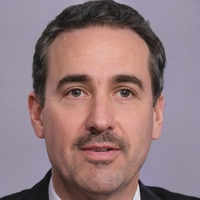
Ever checked out a diploma course in India and felt confused by how long it really takes? You’re not alone. Diploma programs aren’t one-size-fits-all—some promise a qualification in under a year, others stretch past two years, depending on what you pick. It’s not just about how fast you finish; the length can impact your job chances and next career move.
Most people want a straight answer about timing, especially since folks are mixing work, study, and other life stuff. Here’s what matters: the field you pick, the type of course, and even the format—yes, part-time and online options are a thing now, and they shift the pace quite a bit.
If you’re after a course in tech or healthcare, you might be looking at two or three years. Go for a design or language skill? You could get certified in less than twelve months. Knowing these details up front saves you a lot of stress—and money—later on.
- Typical Duration of Diploma Courses
- Short-Term vs. Long-Term Diplomas
- Field-Wise Course Lengths
- Full-Time, Part-Time, and Online Formats
- What to Consider When Choosing a Diploma
Short-Term vs. Long-Term Diplomas
If you’re trying to make sense of diploma course duration in India, here’s a basic rule: diploma course duration depends heavily on whether you choose a short-term or long-term program. Knowing the difference helps you dodge surprises later.
Short-term diplomas usually wrap up in 6 to 12 months. These are perfect if you’re looking for quick career entry or want to upskill fast, maybe in fields like graphic design, computer applications (think DCA), foreign languages, or digital marketing. Institutes like NIIT or Arena Animation offer popular short diplomas you can finish in less than a year.
Meanwhile, long-term diplomas typically last between 2 and 3 years. You’ll see this length for technical courses such as Polytechnic (Diploma in Engineering), Pharmacy (D.Pharm), Nursing (GNM), or Hotel Management. Here, the coursework is deeper—you’ll tackle multiple subjects and practicals. After completion, you can even get lateral entry into the second year of a related degree course, which saves you time if you keep studying.
Here’s a quick comparison for perspective:
| Type of Diploma | Typical Duration | Common Fields |
|---|---|---|
| Short-Term | 6-12 months | Design, IT, Languages, Digital Marketing |
| Long-Term | 2-3 years | Engineering, Pharmacy, Nursing, Hotel Management |
People often ask, "Is it better to pick a shorter or longer course?" Here’s the thing: The answer depends on your goals. If you want job-ready skills in less time, choose short-term. If you’re planning a solid career with room for growth, especially in technical lines, go for the longer diploma.
"Diplomas can kick-start careers quickly, but for a sustainable future in technical fields, employers value longer, in-depth training." – Indian Ministry of Skill Development & Entrepreneurship annual report, 2023
One tip—check if your field has government-recognized diplomas. Employers take those credentials more seriously. And don’t ignore part-time short courses; those let you earn and learn without quitting your job.

Field-Wise Course Lengths
The length of a diploma course in India can swing a lot depending on what you want to study. Here’s how it usually breaks down for the most popular fields—so you know what you’re signing up for before you fill out that application.
- Engineering and Technology: The classic polytechnic diploma lasts three years after class 10. If you enter after 12th, it might be trimmed to two years. Courses like Mechanical, Civil, or Electrical Engineering almost always need the full three years if you start right after the 10th.
- Healthcare: Diplomas like Medical Lab Technology, Radiography, or Nursing Assistant usually run from 1 year to 2 years. A Diploma in Pharmacy (D.Pharm) is a steady two-year program everywhere in India.
- Information Technology and Computer Applications: These can be quick. A Diploma in Computer Applications usually only needs 6 to 12 months. If you dive deeper, like Software Engineering or Hardware, expect 1 to 2 years.
- Design, Animation, and Media: Short-term is the norm here—graphic design or animation diplomas are often 6 months to 1 year. More detailed multimedia courses might stretch up to 18 months.
- Hotel Management and Tourism: Hotel Management diplomas range from 1 year for basic programs to 1.5 or 2 years for more hands-on courses. Travel and tourism diplomas are often just 6 months to a year.
Here’s a quick reference for some popular fields and their typical course durations:
| Field | Common Duration |
|---|---|
| Polytechnic/Engineering | 3 years |
| Pharmacy | 2 years |
| Medical Lab Tech | 1–2 years |
| Computer Applications | 6–12 months |
| Hotel Management | 1–2 years |
| Fashion or Graphic Design | 6–18 months |
If you’re eyeing careers where time and money both matter, check these numbers before you commit. That way, you’re not surprised by extra semesters or hidden fees later.

Full-Time, Part-Time, and Online Formats
Choosing the right format for your diploma course duration in India can make or break your study experience. Let’s break down what you actually get from each style so you don’t waste time—or energy.
Full-time diploma courses have set schedules, regular classes, and usually take one to three years depending on the field. For example, a polytechnic diploma after Class 10 typically takes three years. Healthcare and engineering diplomas also stick to this full-time mode. The upside? You’re done fast. The downside? It’s tough to work a job on the side, and you’re pretty much locked in until you finish.
Part-time diploma courses stretch things out. This works for folks who want to keep working or can’t commit full days to classes. These may take an extra six months to a year compared to full-time. Weekend batches are common, especially in IT, Management, and Design diplomas. The schedule is flexible, but you need to stay motivated—missing classes or juggling work can make the road longer.
Online diploma courses are blowing up, especially after the whole pandemic wave. With institutes like IGNOU, Symbiosis, and private EdTech platforms, you can join from anywhere. Deadlines exist, but you control the pace—finish in six months or stretch it to two years. Online diplomas in Digital Marketing, Data Analytics, and even Cybersecurity are popular with both freshers and working pros.
- Full-time: Best for school pass-outs, fast-tracked learning, hands-on fields.
- Part-time: Perfect for upskilling while working. Slower but easier to manage jobs, family.
- Online: Top pick for flexibility. Great if you already have a job or live far from big cities.
Here’s a quick comparison for the top fields:
| Course Type | Typical Duration | Example Courses |
|---|---|---|
| Full-Time | 1-3 years | Polytechnic, Pharmacy, Hotel Management |
| Part-Time | 1.5-4 years | Diploma in Business Management, Design |
| Online | 6 months-2 years | Digital Marketing, Data Analytics |
Pick what fits your routine, not just what looks good on paper. Keep in mind, recruiters in India still often favor full-time courses for technical roles, but online and part-time options are picking up credibility—especially for skill-based sectors.
